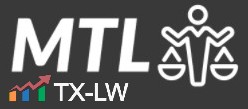Valuation often becomes a point of contention in tax disputes where the taxpayer asserts one value while the IRS puts forth another.
The preferred valuation in disputes can vary depending on the circumstances. For instance, a higher valuation for buildings and building structures is advantageous when claiming depreciation deductions, while a lower valuation for real estate is preferable in estate and gift tax cases. In certain situations like transfer pricing and intangible transfers, the preferred valuation may depend on other tax attributes and positions.
What if the same transfer or transaction has a different value for different types of taxes? For instance, in the case of an estate tax and income tax issue, can the taxpayer take an inconsistent position and benefit from both tax systems? This very question was addressed by the court in Janis v. Commissioner, 461 F.3d 1080 (9th Cir. 2006).
Facts & Procedural History
Conrad and Maria Janis inherited a substantial art gallery consisting of more than 500 pieces of art by famous artists like Jean Arp, Piet Mondrian, and Grandma Moses from Conrad’s father.
Before passing away, Conrad’s father had transferred the art gallery to a trust for himself and his two sons, with Conrad and his brother as executors and trustees. Sotheby’s was hired to value the art collection after the father’s death, and they did so without applying any discounts.
Conrad filed fiduciary trust tax returns where he listed the artwork at a discounted value of $12 million, causing the art gallery to report a net operating loss each year, minimizing the amount of taxes owed. However, the IRS Art Advisory Panel determined that the undiscounted value of the collection was $36 million and the discounted value was $14 million.
Conrad, as a co-executor and trustee, accepted the IRS’s discounted valuation of the estate’s artwork and signed a Form 890 Waiver of Restrictions on Assessment and Collection of Deficiency and Acceptance of Overassessment. Immediately after signing the form, Conrad filed amended fiduciary income tax returns for the trust claiming the undiscounted value of $36 million for the artwork. This caused an even larger net operating loss for the gallery.
The trust was terminated shortly thereafter, and its assets were distributed to a partnership established by Conrad and his brother. The net operating losses for the trust were rolled over into the partnership, which allowed Conrad and his brother to reduce their federal income tax on their personal tax returns.
The Duty of Consistency
The IRS reviewed the Janis brothers’ individual and trust tax returns and concluded that the $14 million discounted value calculated by the IRS for their father’s estate tax liability should have been used on the trust tax returns. This would have limited the net operating losses that flowed through to the brothers’ personal tax returns.
The IRS’s position is based on the concept of a duty of consistency. There are numerous examples where the courts have said that taxpayers have a duty of consistency. But what about a duty of consistency across different types of taxes as in this case?
The court applied the “duty of consistency” principle, holding that the brothers must use the estate tax value for the artwork for both the trust and their personal tax returns. The principle applies when (1) a taxpayer has made a representation, (2) the Commissioner has relied on the representation, and (3) the taxpayer has attempted to change the representation after the statute of limitations has run in a way that harms the Commissioner. This is consistent with other tax cases that apply the duty of consistency.
And what if the duty is made by different, but related, parties as in this case? The brothers argued that if any “representation” was made, it was made by the estate, not by Conrad. The court rejected this argument, stating that Conrad was a beneficiary and co-executor of the estate, and therefore, an interested party with regard to the valuation. If Conrad had only been a trust beneficiary, the court would have had a harder time arguing that he “represented” the artwork’s value on his father’s estate tax return.
So there you have it, taxpayers have a duty of consistency across different types of taxes and even between related parties.
The Takeaway
Although this case involved estate tax discounts for artwork, the same situation often arises with estate tax discounts for real estate or small business interests. In such cases, taxpayers aim to claim a lower valuation for estate tax purposes and a higher value for federal income tax purposes when the property is sold. Beneficiaries who take this approach give up the stepped-up tax basis in the inherited property, resulting in a higher federal income tax liability upon subsequent sale.
In most cases, it is more beneficial for taxpayers to take the lower estate tax valuation, regardless of the lower tax basis, and wait out the waiting period. This is because the federal estate tax rates are higher than the federal income tax rates, and the full step-up in tax basis is set to be eliminated in the coming years.
The lesson from this case is that if taxpayers face this dilemma, they should remove themselves from the estate administration process to avoid making a “representation” regarding the lower estate tax value. Once the time for assessing additional taxes has expired for the estate tax, taxpayers can then use the higher value for federal income tax purposes.
In 40 minutes, we'll teach you how to survive an IRS audit.
We'll explain how the IRS conducts audits and how to manage and close the audit.


